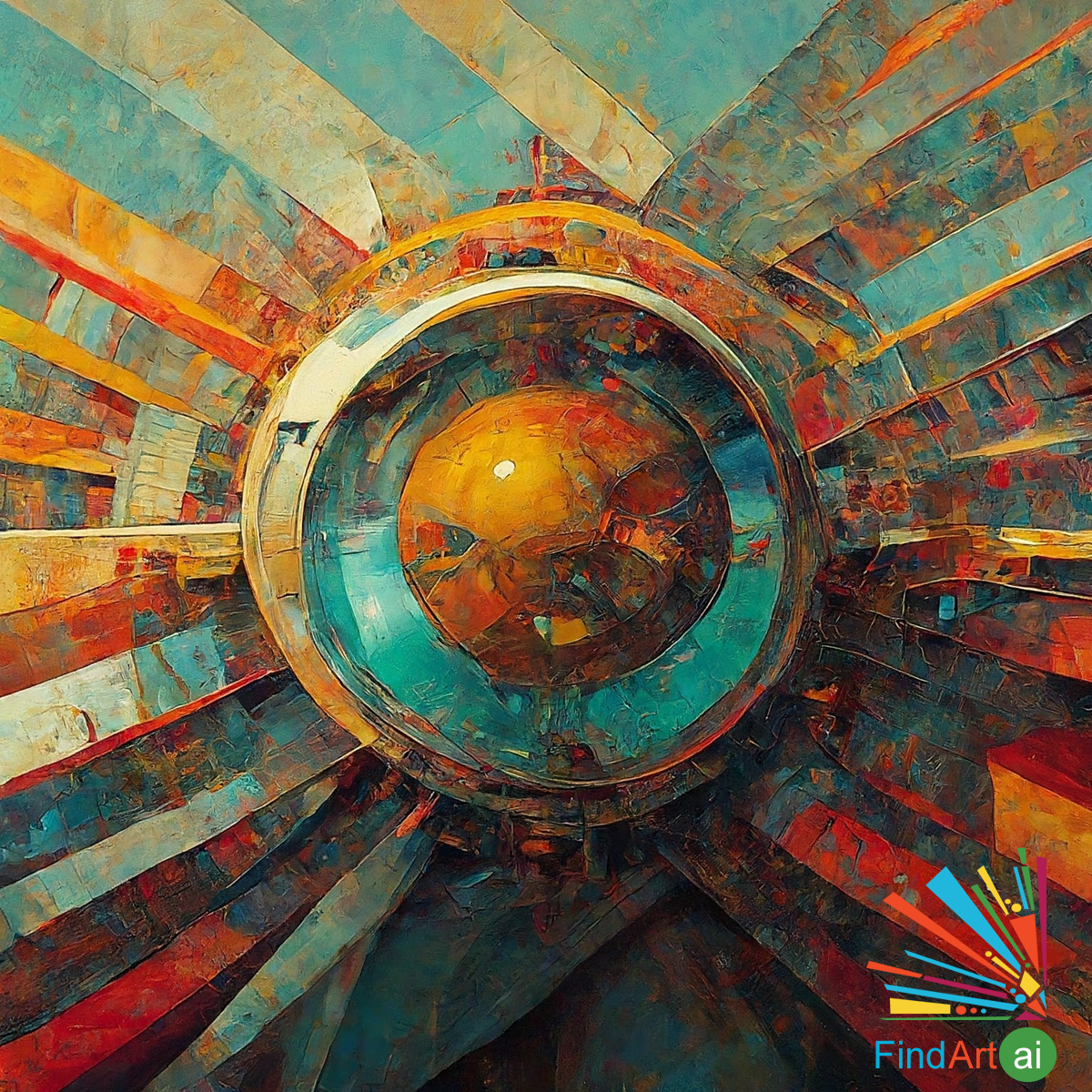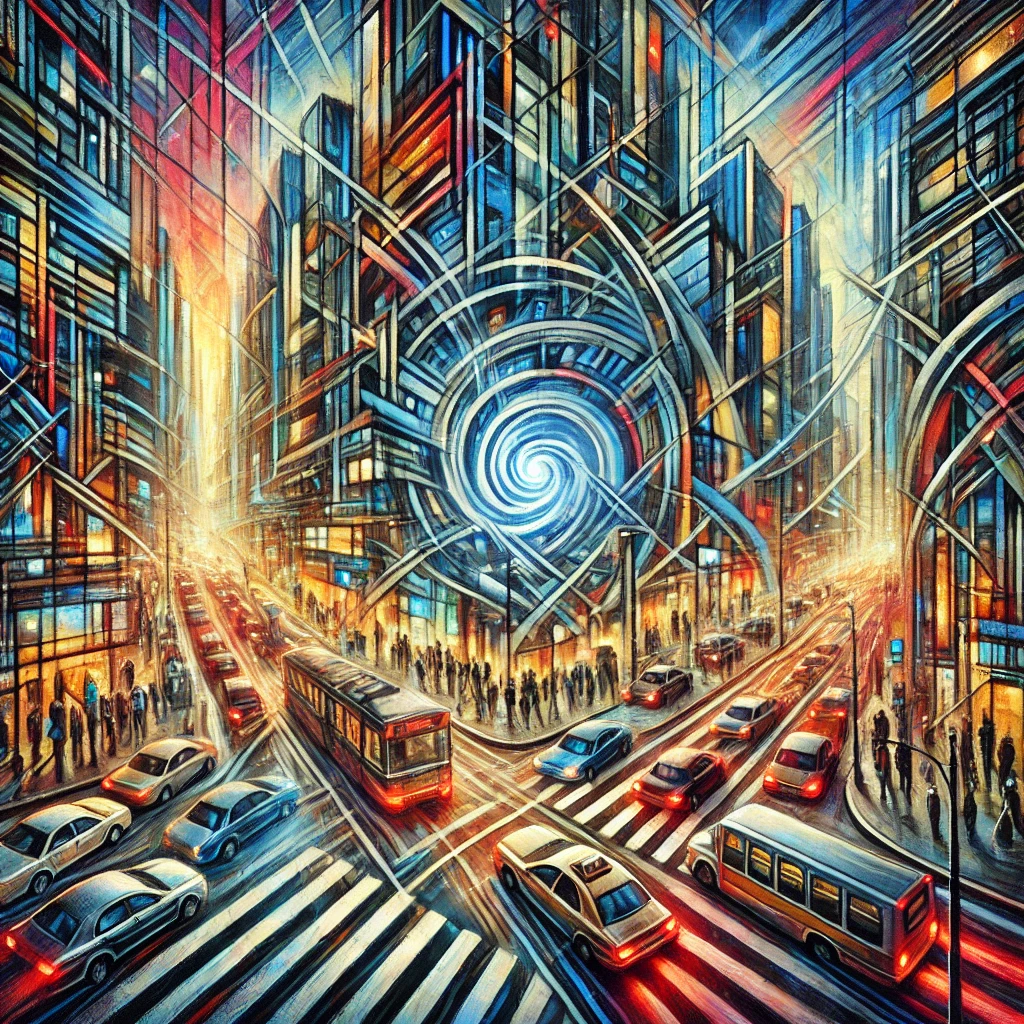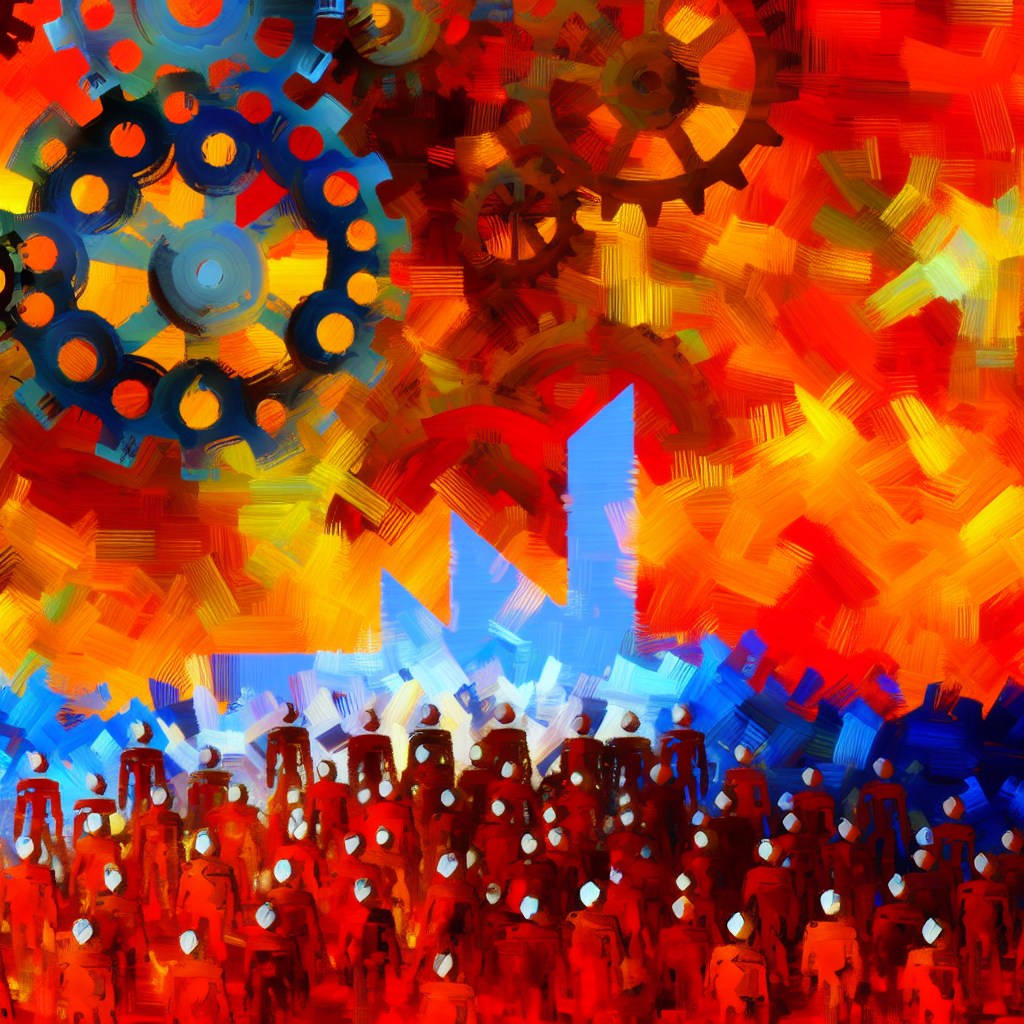Futurism
Futurism is an avant-garde art movement that originated in Italy in the early 20th century, around 1909. It celebrated modernity, technology, speed, and the dynamic energy of contemporary life. Futurist artists sought to capture the movement and the thrill of the modern world, often incorporating themes of industry, machinery, and urban life into their works. The movement was characterized by a rejection of the past and a focus on the future, reflecting the excitement and chaos of the rapidly changing society of the time.
Key Characteristics of Futurism
- Emphasis on Movement and Dynamism
- Futurist artists aimed to depict movement and the sensation of speed. They often used dynamic lines and forms to convey a sense of action and energy, representing the rapid changes of modern life.
- Example: Umberto Boccioni’s Unique Forms of Continuity in Space captures the fluidity and dynamism of movement through its abstracted, contorted forms.
- Bold Colors and Geometric Shapes
- Futurist paintings frequently employed vibrant colors and geometric shapes to create a sense of vibrancy and intensity. The use of color was often intended to reflect the energy of modern life.
- Example: Giacomo Balla’s Dynamism of a Dog on a Leash uses vibrant colors and fragmented forms to illustrate the rapid motion of a dog and its owner.
- Fragmentation of Form
- Futurism embraced fragmentation, breaking down objects into geometric shapes and reassembling them in a way that suggests movement and multiple viewpoints. This fragmentation reflects the complexity and speed of modern life.
- Example: Boccioni’s The City Rises presents a fragmented urban scene filled with dynamic forms, emphasizing the chaos and energy of industrialization.
- Celebration of Technology and Modernity
- The movement was deeply influenced by the advancements in technology, industry, and urbanization. Futurist artists celebrated machines, vehicles, and the modern city as symbols of progress and innovation.
- Example: Fortunato Depero’s Mechanical Head (Guitar) celebrates industrial design and the fusion of art and technology through a sculptural form that embodies mechanization.
- Use of Repeated Forms and Lines
- To convey the idea of motion, Futurist artists often employed repeated forms and lines that suggested speed and fluidity. This technique created a sense of rhythm and movement within the composition.
- Example: Balla’s Speeding Automobile uses repeated lines and forms to convey the sensation of speed and the experience of motion in an urban environment.
- Depiction of Urban Life and Energy
- Futurist works frequently focus on urban scenes, capturing the bustling energy of modern cities, the interplay of light and shadow, and the dynamic movement of people and vehicles.
- Example: Gino Severini’s The Boulevard portrays a lively urban scene, reflecting the excitement and chaos of city life.
- Rejection of Traditional Art Forms
- Futurism rejected traditional artistic conventions, including perspective and realistic representation. Instead, artists experimented with new techniques and forms to express the dynamism of modern life.
- Example: Severini’s Dancer at the Spring breaks away from conventional forms, using geometric shapes and vibrant colors to capture the energy of movement.
Common Themes in Futurism
- Speed and Movement: Futurism emphasizes the speed of modern life, celebrating the sensation of motion and the dynamic nature of contemporary existence.
- Technological Progress: The movement reflects an enthusiasm for technology, mechanization, and industrialization, viewing these as catalysts for social and artistic change.
- Urban Experience: Futurist art often focuses on urban environments, capturing the energy, chaos, and complexity of modern city life.
- Revolution and Change: The movement embodies a revolutionary spirit, advocating for a break from the past and a forward-looking vision that embraces the future.
Famous Futurist Artists and Works
- Umberto Boccioni
- A leading figure in the Futurist movement, Boccioni’s works, such as Unique Forms of Continuity in Space and The City Rises, exemplify the dynamic and fragmented forms characteristic of Futurism.
- Giacomo Balla
- Known for his energetic compositions, Balla’s works like Dynamism of a Dog on a Leash and Speeding Automobile capture the sensation of movement and speed through bold colors and dynamic forms.
- Gino Severini
- Severini’s paintings, such as The Boulevard and Dancer at the Spring, blend Futurist themes with a focus on urban life and movement, often incorporating elements of Cubism.
- Fortunato Depero
- Depero’s work, including Mechanical Head (Guitar), celebrates the intersection of art and technology, emphasizing the Futurist interest in mechanization and industrial design.
- Carlo Carrà
- Carrà’s works, such as The Funeral of the Anarchist Galli, blend Futurist and metaphysical themes, exploring the interplay between movement, emotion, and social commentary.
Futurism is an art movement that celebrates the dynamism, energy, and excitement of modern life through the depiction of movement, technology, and urban experiences. By breaking down forms into geometric shapes and employing bold colors, Futurist artists sought to capture the essence of speed and change, reflecting the rapid advancements of the early 20th century. The movement's rejection of traditional artistic conventions and its embrace of the future significantly influenced the course of modern art, paving the way for new forms of expression and experimentation.
Futurism Paintings with Technological Progress Theme
Futurist paintings with a Technological Progress theme are characterized by their dynamic depictions...
Futurism Paintings with Speed and Movement Theme
Futurism paintings with the Speed and Movement theme embody the exhilaration and intensity of motion...
Futurism Paintings with Urban Experience Theme
Futurism paintings with the Urban Experience theme glorify the vitality and dynamism of city life, c...
Futurism Paintings with Revolution and Change Theme
Futurism paintings with the Revolution and Change theme reflect the powerful forces of upheaval, inn...




